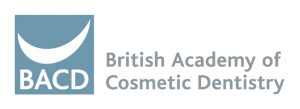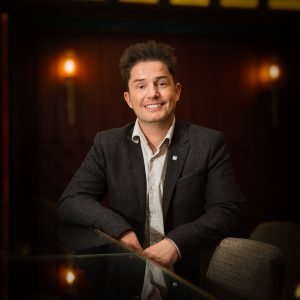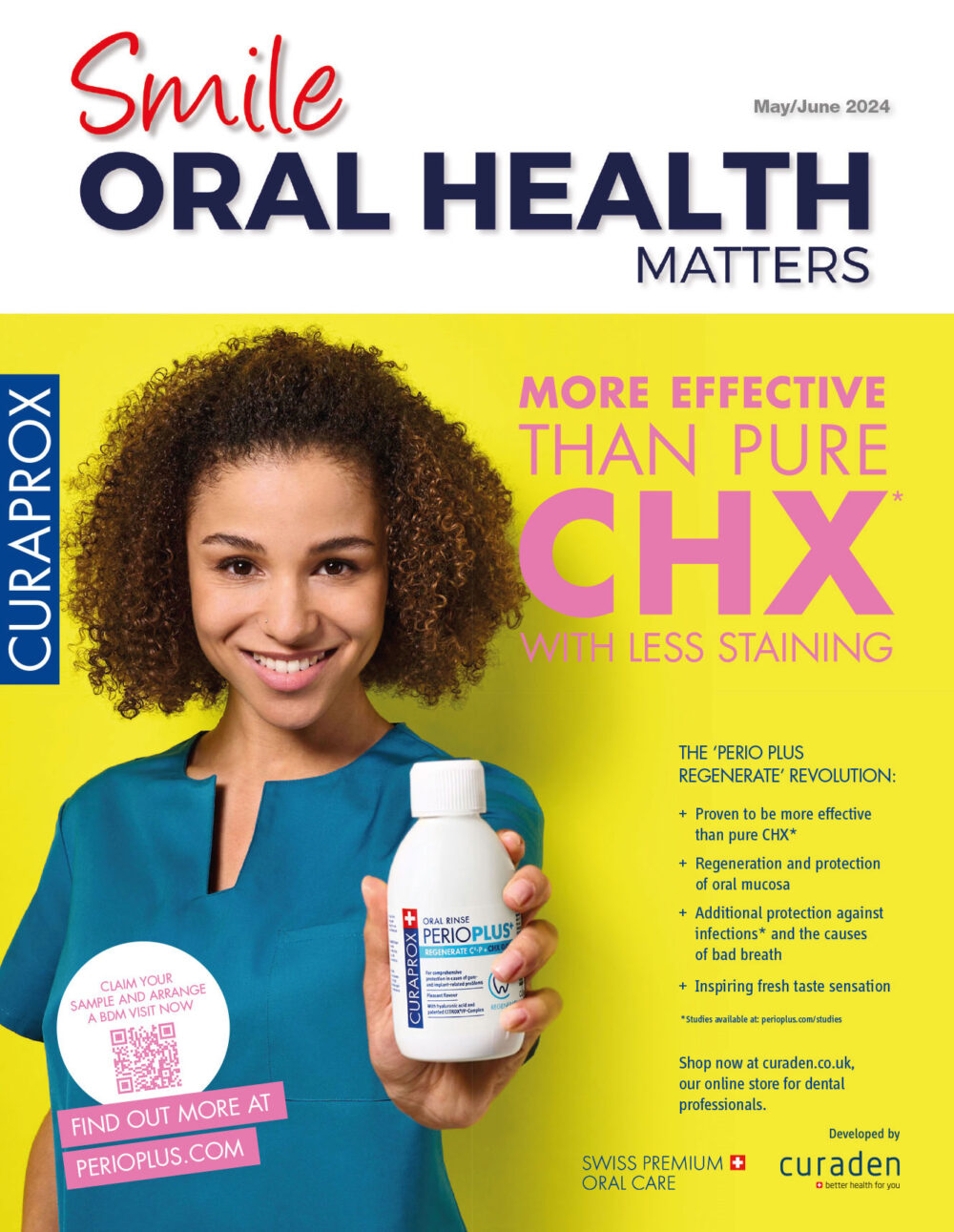Bruxism is a masticatory muscle activity that can take a heavy toll on the body as well as the quality of life of sufferers.[i] Between diurnal and nocturnal habits, sleep bruxism is the most studied, and may affect between 5% and 49% of children, depending on which study you read.[ii] The Bruxism Association quotes 20% as an underestimate, with many parents not realising their children are experiencing the disorder.[iii]
According to the NHS, most childhood bruxism eases after the appearance of adult teeth.[iv] However, persisting, frequent behaviour may have deep effects on orofacial structures.[v] Consequences can include wear, erosion and fracture of teeth, temporomandibular disorder of the jaw joints, myofascial pain, malocclusion, periodontal disease, caries and impacted teeth.[vi] Sufferers of all ages can experience insomnia, headaches, tinnitus and noise sensitivity, eating disorders, and depression.[vii] [viii]
Cosmetic dental practitioners may find themselves addressing some of the consequences of bruxism on a daily basis. We will advise patients to address the cause of the habit before undergoing any form of restorative treatment, so awareness of the potential causes is vital for clinicians.
The links between airway problems and childhood bruxism
Cited causes of childhood bruxism can range from misaligned teeth, pain from earaches or teething, to stress or medical factors, like ADHD, palsy or some medications. [ix]
However, a topic of great interest in recent research has been the link between airway dysfunction, including sleep apnoea[x] or upper airway obstruction, and dental health. Particularly surprising perhaps is the specific link between airway problems and bruxism in children. A recent study, with subjects at an average age of six, found that an overwhelming 62.5% of children with respiratory problems exhibited a habit of bruxism.[xi]
Respiratory problems in sleep may lead to a habit of mouth-breathing, which is reported in 10-15% of children. The link between oral breathing and a whole host of dental problems is well documented.[xii] [xiii]
Where hypertrophy of tonsils and adenoids is present, which is a common cause of breathing problems, surgery can be an effective solution to bruxism. A study comparing the incidence of bruxism before and after adenotonsillectomy in children with sleep apnoea, found that three months after surgery, disturbed breathing had been resolved in all children and there had been a significant reduction in bruxism, from 45% to 11%.[xiv]
Treating bruxism
A range of therapies and treatments for bruxism exist, including cognitive behavioural therapy, sleep hygiene and relaxation techniques, though their effectiveness is not well-established.[xv] Other solutions include physiotherapy to ease the muscular-skeletal symptoms of sufferers, [xvi] and medications. [xvii]
Occlusal splints are often successful in the prevention of dental damage and grinding sounds associated with sleep bruxism. [xviii] However, they can actively encourage mouth-breathing, causing an aggravation of respiratory disturbances in apnoeic patients.[xix] A mandibular advancement device, which works by moving the jaw forward, might be an alternative treatment in patients with obstructive sleep apnoea (OSA) and sleep bruxism, but more research is needed to confirm efficacy.[xx]
Mouth breathing – specifically the position of the tongue – can have a profound effect on the growth and development of the jaws and facial bones. The changed function and the posture of facial muscles can affect the development of the lower jaw, leading to a retrusion or ‘flattened’ profile. As well as affecting the alignment of teeth, this can have a significant impact on overall facial aesthetics as well as function.[xxi] Evaluation by an orthodontist or oral and maxillofacial surgeon is needed to determine the most appropriate treatment approach to malocclusion in severe cases.
Mouth-taping has recently become a popular home-remedy for mouth-breathing, [xxii] and indeed, mild cases of OSA where mouth-breathing is present, may respond well. Recent research has shown promising results in adults, where patients can tolerate treatment, and where there is no significant retrognathia, though more research is advised.[xxiii]
Restoration
Once underlying conditions and factors have been addressed, cosmetic dentists may use a range of techniques to address some of the damage caused by bruxism, including composite bonding, crowns, bridges or no-prep veneers.
The right treatment can improve dental function and protect teeth from ongoing damage, as well as restoring aesthetics. Studies continue to show the positive psychological impact of aesthetic improvements to teeth,[xxiv]and cosmetic restoration is equally concerned with treating symptoms like wear. For these reasons, treatments like dental bonding to correct damage and prevent decay in children’s teeth – even deciduous teeth -– may well be appropriate.[xxv]
Connecting to a community for professional development
The British Academy of Cosmetic Dentistry (BACD) offers members access to a wealth of resources on restorative options to treat patients who have experienced bruxism. There are various networking and CPD opportunities to support clinicians in delivering the most appropriate and ethical care to patients of all ages and requirements. In addition, the BACD offers numerous chances to share knowledge and best practice with peers at events throughout the year with some of the best speakers in the industry.
The best clinical practice is underpinned by curiosity – asking the right questions and listening well to the answers. By building knowledge on a wide range of topics, including the potential causes of bruxism, clinicians will be well positioned to support all their patients with ethical and minimally invasive solutions, not matter their concerns or age.

For more information, visit https://bacd.com/

[i] Suguna S, Gurunathan D. Quality of life of children with sleep bruxism. J Family Med Prim Care. 2020 Jan 28;9(1):332-336. doi: 10.4103/jfmpc.jfmpc_820_19. PMID: 32110614; PMCID: PMC7014878.
[ii] [1] Machado E, Prevalence of sleep bruxism in children: A systematic review Articles • Dental Press J. Orthod. 19 (6) • Dec 2014 • https://doi.org/10.1590/2176-9451.19.6.054-061.oa
[iii] Children and Bruxism. The Bruxism Association. https://www.bruxism.org.uk/children-and-bruxism.php. Accessed January 2024.
[iv] Teeth grinding (bruxism). NHS. https://www.nhs.uk/conditions/teeth-grinding Accessed January 2024
[v] D’Onofrio L. Oral dysfunction as a cause of malocclusion. Orthod Craniofac Res. 2019 May;22 Suppl 1(Suppl 1):43-48. doi: 10.1111/ocr.12277. PMID: 31074141; PMCID: PMC6851783.
[vi] Barbosa Tde S, Miyakoda LS, Pocztaruk Rde L, Rocha CP, Gavião MB. Temporomandibular disorders and bruxism in childhood and adolescence: review of the literature. Int J Pediatr Otorhinolaryngol. 2008 Mar;72(3):299-314. doi: 10.1016/j.ijporl.2007.11.006. Epub 2008 Jan 3. PMID: 18180045.
[vii] Edvall NK, Gunan E, Genitsaridi E, Lazar A, Mehraei G, Billing M, Tullberg M, Bulla J, Whitton J, Canlon B, Hall DA, Cederroth CR. Impact of Temporomandibular Joint Complaints on Tinnitus-Related Distress. Front Neurosci. 2019 Aug 22;13:879. doi: 10.3389/fnins.2019.00879. PMID: 31548840; PMCID: PMC6736614.
[viii] Bruxism. National Library of Medicine. https://medlineplus.gov/ency/article/001413.htm January 2024. Accessed January 2024.
[ix] Bruxism (Teeth Grinding or Clenching) Kids Health Available at: https://kidshealth.org/en/parents/bruxism.html January 2021. Accessed February 2024
[x] Martynowicz H, Gac P, Brzecka A, Poreba R, Wojakowska A, Mazur G, Smardz J, Wieckiewicz M. The Relationship between Sleep Bruxism and Obstructive Sleep Apnea Based on Polysomnographic Findings. J Clin Med. 2019 Oct 11;8(10):1653. doi: 10.3390/jcm8101653. PMID: 31614526; PMCID: PMC6832407.
[xi] Motta, Lara Jansiski; Bortoletto, Carolina Carvalho1,; Marques, Alyne Jacques1; Ferrari, Raquel Agnelli Mesquita1; Fernandes, Kristianne Porta Santos1; Bussadori, Sandra Kalil1. Association between respiratory problems and dental caries in children with bruxism. Indian Journal of Dental Research 25(1):p 9-13, Jan–Feb 2014. | DOI: 10.4103/0970-9290.131047
[xii] Tamkin J. Impact of airway dysfunction on dental health. Bioinformation. 2020 Jan 15;16(1):26-29. doi: 10.6026/97320630016026. PMID: 32025158; PMCID: PMC6986941.
[xiii] Festa P, Mansi N, Varricchio AM, Savoia F, Calì C, Marraudino C, De Vincentiis GC, Galeotti A. Association between upper airway obstruction and malocclusion in mouth-breathing children. Acta Otorhinolaryngol Ital. 2021 Oct;41(5):436-442. doi: 10.14639/0392-100X-N1225. PMID: 34734579; PMCID: PMC8569668.
[xiv] DiFrancesco R, Andreya P, Junqueira S, Trezza PM, de Faria MJ, Frizzarini R, Zerati FE, Improvement of bruxism after T & A surgery, International Journal of Pediatric Otorhinolaryngology, Volume 68, Issue 4, 2004, Pages 441-445,
[xv] Guaita M, Högl B. Current Treatments of Bruxism. Curr Treat Options Neurol. 2016 Feb;18(2):10. doi: 10.1007/s11940-016-0396-3. PMID: 26897026; PMCID: PMC4761372.
[xvi] Gomes CA, El Hage Y, Amaral AP, Politti F, Biasotto-Gonzalez DA. Effects of massage therapy and occlusal splint therapy on electromyographic activity and the intensity of signs and symptoms in individuals with temporomandibular disorder and sleep bruxism: a randomized clinical trial. Chiropr Man Therap. 2014 Dec 15;22(1):43. doi: 10.1186/s12998-014-0043-6. PMID: 25512839; PMCID: PMC4266206.
[xvii] Guaita M, Högl B. Current Treatments of Bruxism. Curr Treat Options Neurol. 2016 Feb;18(2):10. doi: 10.1007/s11940-016-0396-3. PMID: 26897026; PMCID: PMC4761372.
[xviii] Guaita M, Högl B. Current Treatments of Bruxism. Curr Treat Options Neurol. 2016 Feb;18(2):10. doi: 10.1007/s11940-016-0396-3. PMID: 26897026; PMCID: PMC4761372.
[xix] Gagnon Y, Mayer P, Morisson F, Rompré PH, Lavigne GJ. Aggravation of respiratory disturbances by the use of an occlusal splint in apneic patients: a pilot study. Int J Prosthodont. 2004 Jul-Aug;17(4):447-53. PMID: 15382781.
[xx] Guaita M, Högl B. Current Treatments of Bruxism. Curr Treat Options Neurol. 2016 Feb;18(2):10. doi: 10.1007/s11940-016-0396-3. PMID: 26897026; PMCID: PMC4761372.
[xxi] Kuskonmaz CS, Bruno G, Bartolucci ML, Basilicata M, Gracco A, De Stefani A. Correlation between Malocclusions, Tonsillar Grading and Mallampati Modified Scale: A Retrospective Observational Study. Children (Basel). 2023 Jun 14;10(6):1061. doi: 10.3390/children10061061. PMID: 37371292; PMCID: PMC10297212.
[xxii] Summer J, Rehman A. Mouth Taping for Sleep: Does it Work? Sleep Foundation. Available at: https://www.sleepfoundation.org/snoring/mouth-taping-for-sleep January 2024. Accessed February 2024.
[xxiii] Lee YC, Lu CT, Cheng WN, Li HY. The Impact of Mouth-Taping in Mouth-Breathers with Mild Obstructive Sleep Apnea: A Preliminary Study. Healthcare (Basel). 2022 Sep 13;10(9):1755. doi: 10.3390/healthcare10091755. PMID: 36141367; PMCID: PMC9498537.ß
[xxiv] Davis LG, Ashworth PD, Spriggs LS. Psychological effects of aesthetic dental treatment. J Dent. 1998 Sep;26(7):547-54. doi: 10.1016/s0300-5712(97)00031-6. PMID: 9754742.
[xxv] Donly KJ., Garcia-Godoy F. The use of resin-based composite in children. Pediatric Dentistry – 24:5 2002. Pages 480 – 488.












